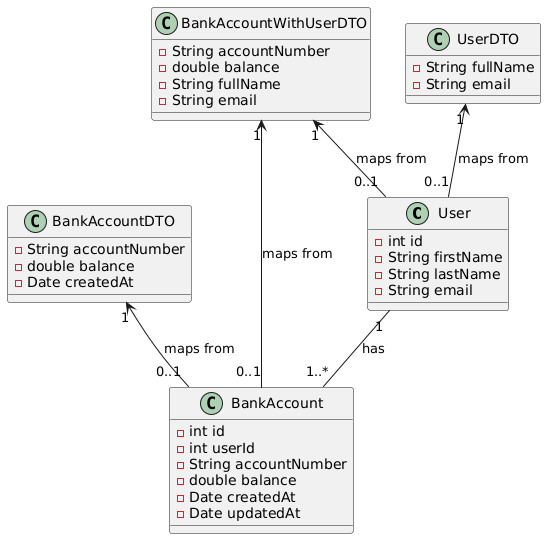DTOs: When, Why, and How to Use Them
The Problem - read and understand
In web applications, we often need to send data between different layers (e.g., from the server to the client). You have a few options when returning data from a controller method:
- Return the domain model / entity directly.
- Return a Data Transfer Object (DTO).
But when should you use a DTO instead of an entity? What is the purpose of a DTO, and how does it help in building maintainable, scalable applications?
The Solution
The choice between returning an entity or a DTO depends on several factors, including security, performance, and the need to decouple your internal logic from the external API.
You should use a DTO when:
- You want to limit which attributes of an entity are exposed to the client (e.g., hiding sensitive data).
- You need to transform or aggregate data to create a custom response format.
- You want to decouple your domain model / entity from the API contract to allow independent evolution of each.
You might return the entity directly in simpler scenarios, where you trust the consumer of the data (e.g., internal microservices) or when exposing all fields from the entity is acceptable.
Scenario 1: Returning an entity Directly
You have a City entity representing cities with the following attributes:
public class City {
private Long id;
private String name;
private String zipCode;
private String state;
private String country;
private String mayorName;
private double budget;
// Getters and setters
}
Your controller / service method returns this entity:
public City showCity() {
return new City("New York", "10001", "NY", "USA", "John Doe", 5000000);
}
Your view renders all the attributes directly:
<h1>City Information</h1>
<p>City: </p>
<p>Zip Code: </p>
<p>State: </p>
<p>Country: </p>
<p>Mayor: </p>
<p>Budget: $</p>
In this case, the entire city object is exposed to the client. This approach can lead to over-exposing data, such as the mayor’s name or the city’s budget, which may not be necessary for the client. Additionally, if the entity changes (e.g., adding sensitive internal fields), you risk unintentionally exposing new data.
Scenario 2: Using a DTO
To avoid exposing unnecessary or sensitive fields, you can introduce a DTO. A DTO is a lightweight object that carries only the data you want to share with the client.
Here’s a CityDTO that includes only the essential public information:
public class CityDTO {
private Long id;
private String name;
private String zipCode;
private String state;
private String country;
public CityDTO(Long id, String name, String zipCode, String state, String country) {
this.id = id;
this.name = name;
this.zipCode = zipCode;
this.state = state;
this.country = country;
}
// Getters
}
In your controller, you now map the City entity to CityDTO:
public CityDTO showCity() {
City city = new City(1L, "New York", "10001", "NY", "USA", "John Doe", 5000000);
return new CityDTO(city.getId(), city.getName(), city.getZipCode(), city.getState(), city.getCountry());
}
Your view renders only the DTO fields:
<h1>City Information</h1>
<p>ID: </p>
<p>City: </p>
<p>Zip Code: </p>
<p>State: </p>
<p>Country: </p>
Here, the sensitive fields like mayorName and budget are not exposed, providing better control over what data the client can access.
Common Mistakes and Misconceptions
-
Returning an entity Instead of a DTO: When exposing your domain model / entity, you risk revealing unnecessary or sensitive data to external systems or clients. It also tightly couples your API response structure to your internal entity, making future changes difficult.
-
Creating a DTO That Is a Direct Copy of an entity: If your DTO is simply a 1-to-1 copy of your entity, it doesn’t add much value. A DTO should focus on what the client needs, potentially merging or transforming data from multiple entities, reducing over-fetching, and ensuring clarity in API responses.
-
Adding Business Logic to a DTO: DTOs are meant to be simple containers for data, not for business logic. Business logic should remain in the entity or service layer to maintain separation of concerns.
Review
- A DTO (Data Transfer Object) is a lightweight class used to carry data between layers of an application, often between the backend and frontend. It contains no business logic, just data.
- A Model / Entity typically represents the domain entity in the business layer and can contain logic and relationships.
- Use a DTO when:
- You need to control or limit the data exposed to the client.
- You want to ensure API response structures are decoupled from internal models.
- You need to aggregate data or create custom projections for specific use cases.
Summary
In summary, DTOs are used to create a clear boundary between your internal model / entities and the data that gets exposed to external systems. They help ensure that your API remains flexible, maintainable, and secure by giving you full control over what is returned to the client.
Further Exercises
- Create a new model / entity,
Person, with attributes likefirstName,lastName,dateOfBirth, andsocialSecurityNumber. - Write a DTO,
PersonDTO, that only exposes the person’sfirstNameandlastName, hiding thedateOfBirthandsocialSecurityNumber. - Write a controller / service method that maps
PersontoPersonDTOand returns it to the client. - You are given an entity called
Userwith the following attributes:
id- integerfirst_name- stringlast_name- stringemail- string
You are given an entity called BankAccount with the following attributes:
id- integeruser_id- integeraccount_number- stringbalance- doublecreated_at- dateupdated_at- date
Task 1: Create a DTO called UserDTO with the following attributes:
fullName- stringemail- string
Task 2: Create a main method that creates a User object and a UserDTO object.
Task 3: Print out the fullName from the UserDTO object.
Task 4: Create a DTO called BankAccountDTO with the following attributes:
accountNumber- stringbalance- doublecreatedAt- date
Task 5: In the main() method create a BankAccount object and a BankAccountDTO object.
Task 6: Create a DTO called BankAccountWithUserDTO with the following attributes:
accountNumber- stringbalance- doublefullName- stringemail- string
Task 7: In the main method create a BankAccountWithUserDTO object with help from the User and BankAccount objects.
Task 8: Print out the fullName and balance from the BankAccountWithUserDTO object.
UML Class diagram for inspiration
